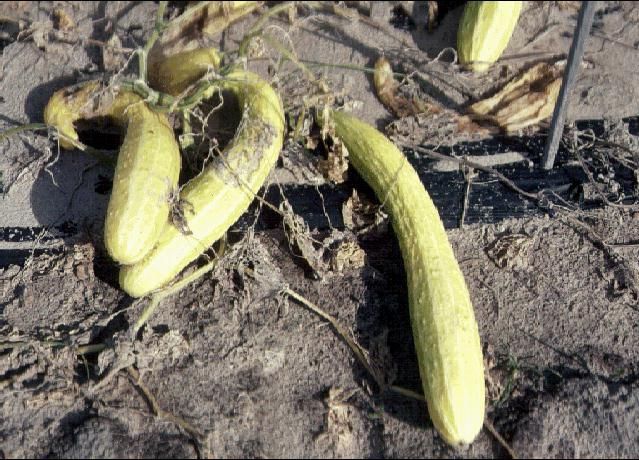Cucumber, Armenian—Cucumis melo L. (Flexuosus group)1
Armenian cucumber is known by several other names such as snake cucumber, snake melon, and uri. It should not be confused with the snake gourd or club gourd, Trichosanthes anguina.
Description
Armenian cucumber is closely related to muskmelon, but is elongated like a cucumber. The slender fruit is usually about 3 feet long and 3 inches in diameter, almost always bent and twisted. It is dark green, marked with paler green longitudinal furrows, and is thicker at the blossom end. The fruit changes to yellow when ripe, at which time it has a strong muskmelon odor.

Credit: James M. Stephens
The annual vine is creeping, with slender roundish to angular stems covered with short hairs. The leaves are rounded, almost kidney-shaped with five angles (lobes). Both male and female flowers on the vine are small and pale yellow, with five rounded divisions. Seeds are more like those of a muskmelon than a cucumber.
Individual plants may be found bearing fruits that are long and twisted and at the same time other fruits that are broad and oval. Sometimes even the same fruit will be thin and snake-like near the stem end, but swollen at the other end similar to a melon.
Culture
In Florida, as in most parts of the country, the Armenian cucumber is grown as a curiosity and for pickling. Planted in late August in Gainesville, fruits suitable for use have been produced by late October.
It is a warm season crop, and should be planted from seed in the early spring or early fall in all areas of Florida except south Florida where it may be seeded October through February. Follow the cultural suggestions for cucumber and cantaloupe. Growers should be on the alert for powdery mildew and downy mildew, two common diseases of cucumbers and cantaloupes.


